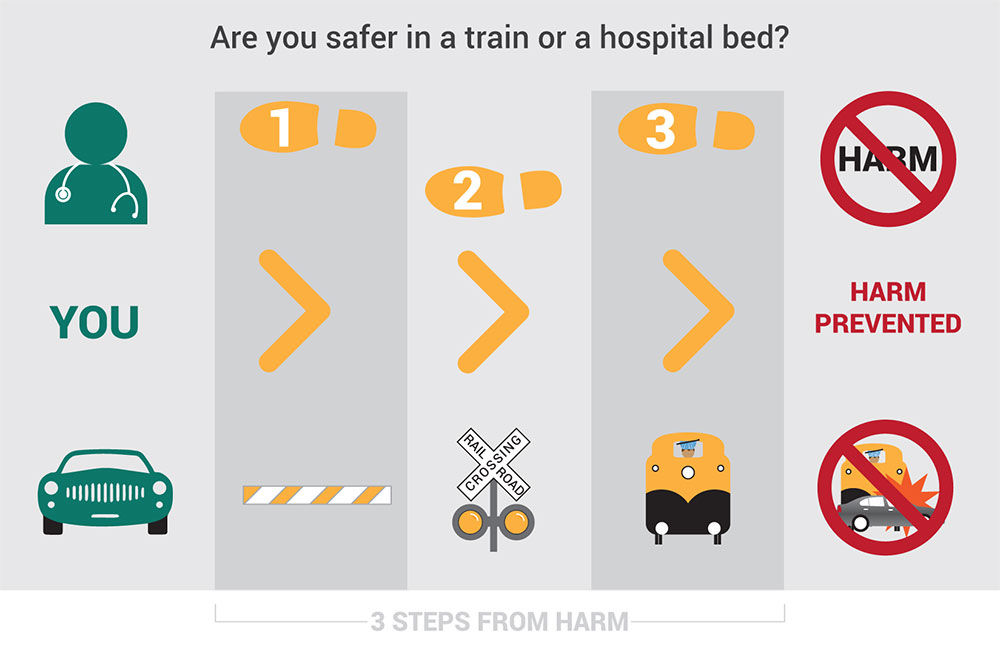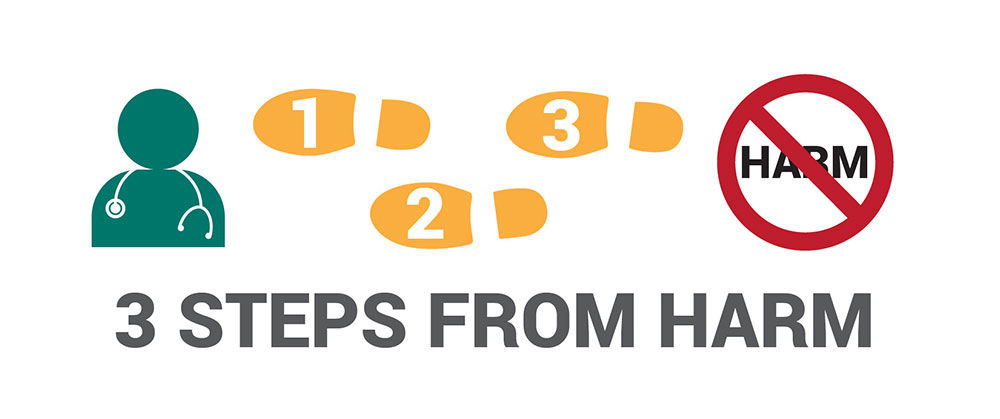any of these errors are due to breakdowns in care delivery processes. Although we are well-regarded for quality and patient safety, medical errors resulting in injury or death do occur in our facilities. We all ultimately play a role and sometimes it’s difficult to know where to start. One simple concept that we can apply immediately is designing our work processes to keep patients “three steps from harm.” David Marx shared this concept at the November 2016 LDI.
Here's the idea:
Three steps from harm are processes designed to tolerate three defects before an undesired event. In other words, the patient is protected from at least three errors before harm occurs.

Consider an everyday example: crossing train tracks. The potential harm is to be struck by an oncoming train. While the task is simple, there are many steps to prevent being struck built into the process. Physical barriers exist to prevent a person from walking across the tracks when a train is coming. There are flashing lights as well as horns to alert a person. Finally, the operator is positioned within the cab to have a good view of the path ahead with the ability to stop the train when a hazard exists.
In this system, there are at least three steps or barriers protecting against a train/pedestrian impact. All three would have to individually fail for harm to occur.
What’s next?
Think about the processes in your work area.
- What are the steps you take?
- What can potentially go wrong within each step?
- What are the consequences if a step fails?
- Are there three steps protecting your patient from harm built into the process?
- What additional barriers can I add to ensure three steps exist?
Bob Pendleton
Safety as a value requires a cultural shift, not just getting people to talk about patient safety but to know how it impacts everything we do. U of U Health’s Director of Patient Safety Iona Thraen draws from the personal to highlight a system-based approach for moving from reactive to proactive patient safety.
For National Injury Prevention Day, Spencer Steinbach, Senior Nursing Director, discusses safety and injury prevention in nursing and the outdoors and shares tips for your next adventure.
The practice of medicine is recognized as a high-risk, error-prone environment. Anesthesiologist Candice Morrissey and internist and hospitalist Peter Yarbrough help us understand the importance of building a supportive, no-blame culture of safety.
